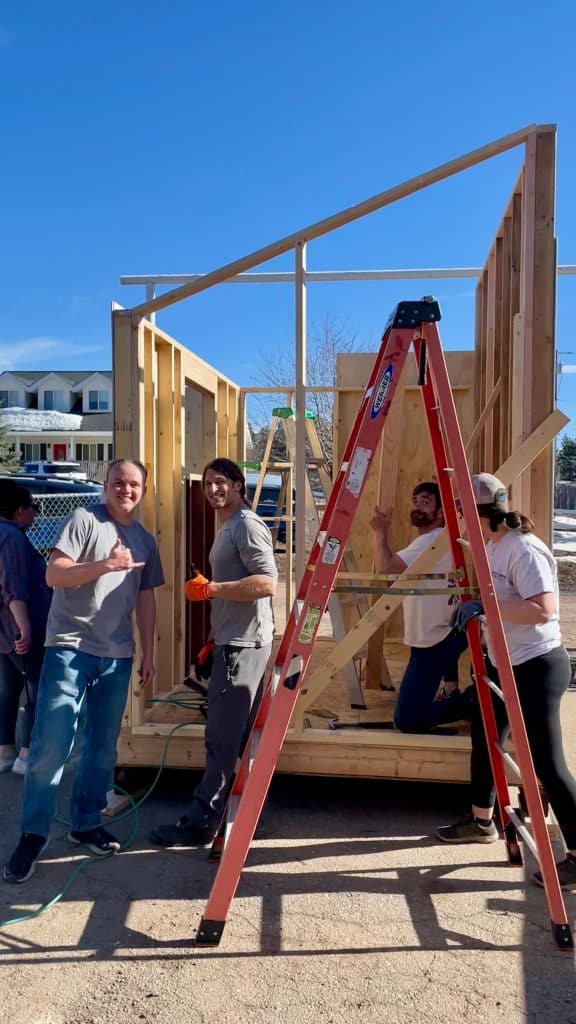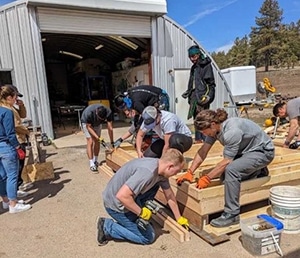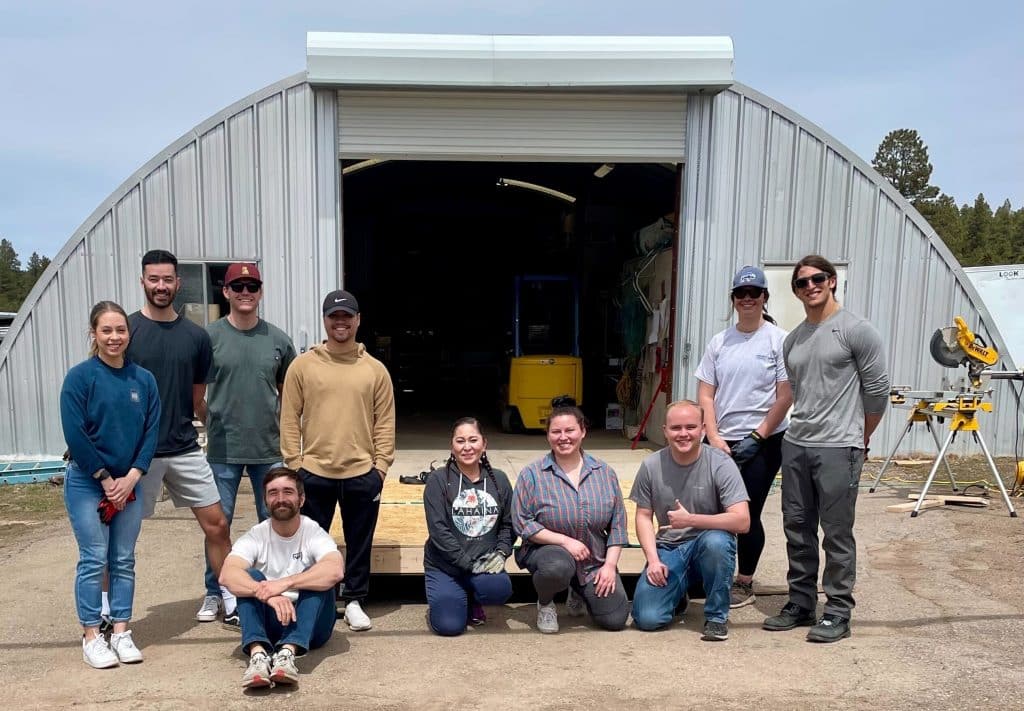It would be easy for someone living in Flagstaff temporarily while pursuing a degree to keep an arm’s length distance from the community. It would be simpler to stay ignorant of the issues facing its residents and naïve to ways that the community might need them.
Tyler Cooper, a second-year doctor of physical therapy student from San Luis Obispo, California, and many other members of his cohort chose the difficult way—they got involved.
When Cooper began his journey in the program, he remembers what one of his professors said: “A cohort is a group that marches together.” That stuck with Cooper, and soon the students began to find ways to march together through volunteerism. Throughout their first year, the PT students volunteered with Special Olympics, Boys and Girls Club, the American Parkinson’s Disease Association, and now, Community Assistance Teams of Flagstaff (CATs).

“I’m lucky to be part of a cohort full of people who want to help,” he said. On the day of the build, they had planned to work until 4 p.m., but that time came and went with the students continuing until the job was done. They wanted to see it through.
For Cooper, service isn’t optional. “As student physical therapists, we have a social responsibility. I try to infuse the principles of PT into my volunteer work. We have the opportunity to help people focus on their strengths and meet them where they are. We try to understand challenges faced and help people overcome them.”
It’s this mindset that compelled Cooper to do more. Recently, he was asked to join the board of directors for CATs. “There are many underserved and underrepresented communities in Flagstaff, but there are also resources. The goal of CATs is to help engage and empower people, especially Indigenous, unhoused and those facing other challenges to connect to those resources in our community,” he said.
Another student in this PT cohort is Peri Montoya, an Arizona native and an NAU alum who chose to stay in Flagstaff for her doctorate in physical therapy. Montoya said the principles of physical therapy and the principles of community involvement go hand in hand. “In the NAU physical therapy program, we are taught that the patient is the focus. We don’t tell people our goals for them, we support their goals. I think that applies to the population that CATs serves as well, the unhoused. They seek to help people achieve their own personal goals and advocate for the community and its needs.”
One way this PT cohort served the community was through a CATs Flagstaff Pop-Up Care Village at Bushmaster Park for unsheltered residents and the community to gather together, enjoy a feast and learn about available resources. Local businesses and organizations offered legal and job services, health care, haircuts, acupuncture and more. The tiny house protype was on display along with Cooper and roughly 30 other NAU physical therapy students serving as volunteers and hosting a table to share information about NAU’s Pro Bono PT Clinic. NAU’s Department of Dental Hygiene was also there to talk about their clinic, which offers free cleanings, exams and
For Montoya, who has a personal connection to the unhoused population, it was meaningful to see so many people coming together to show acts of kindness to their fellow humans. “Small acts truly can make a huge difference. At the Care Village, I helped fit a man for shoes that he was hesitant to grab. I told him these would be good to prepare him for winter and encouraged him to take them. I could tell he was hesitant to accept the assistance, but I hope that all of us together showed him and others that it’s OK to ask for help.”
It is the hope of both Cooper and Montoya that the regular practice of community service will remain a focus for all NAU physical therapy students long after graduation. As the cohort prepares for the Fall semester, they return ready to continue their ‘march together.’
To learn more about NAU’s Physical Therapy Department, visit nau.edu/pt.
Alexandra Fischer | College of Health and Human Services




